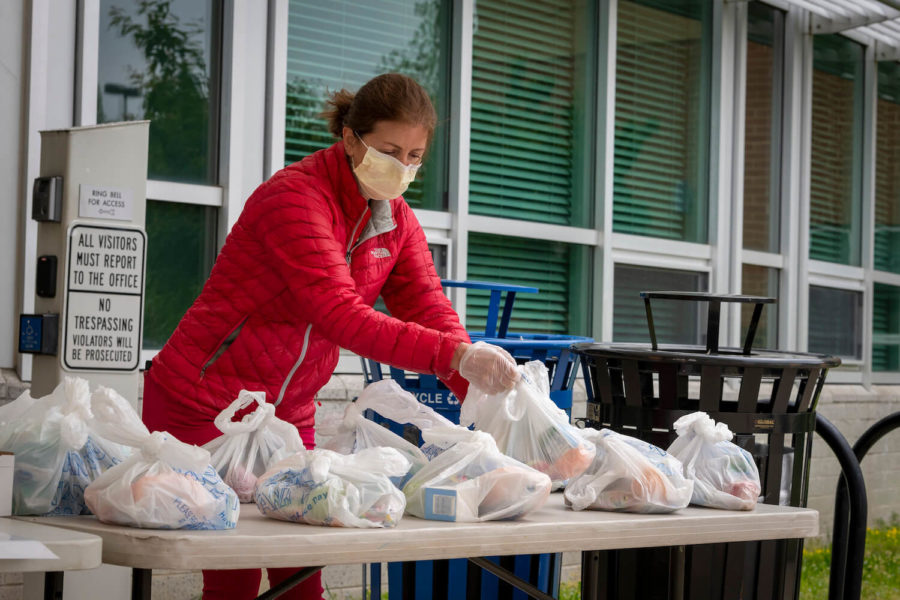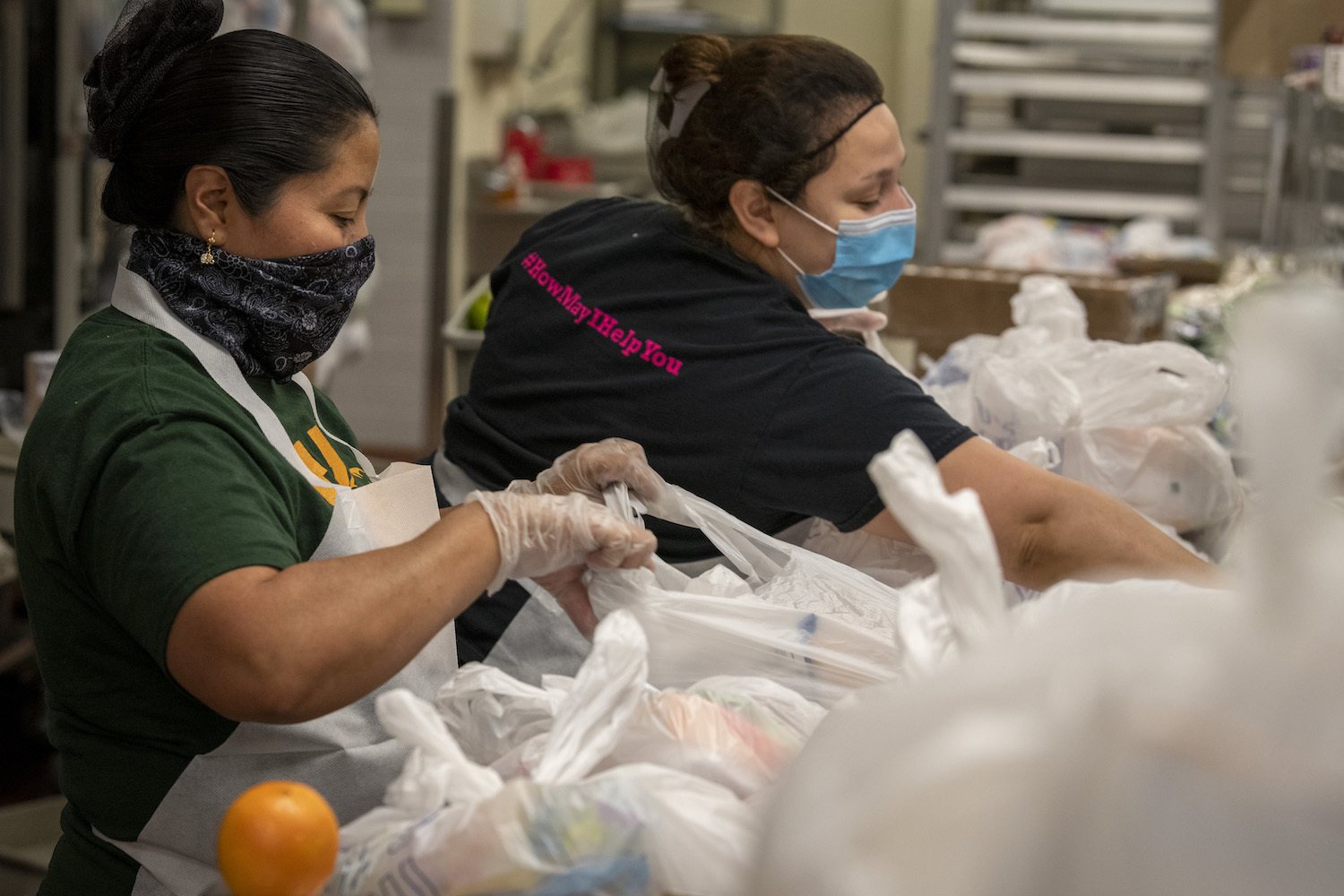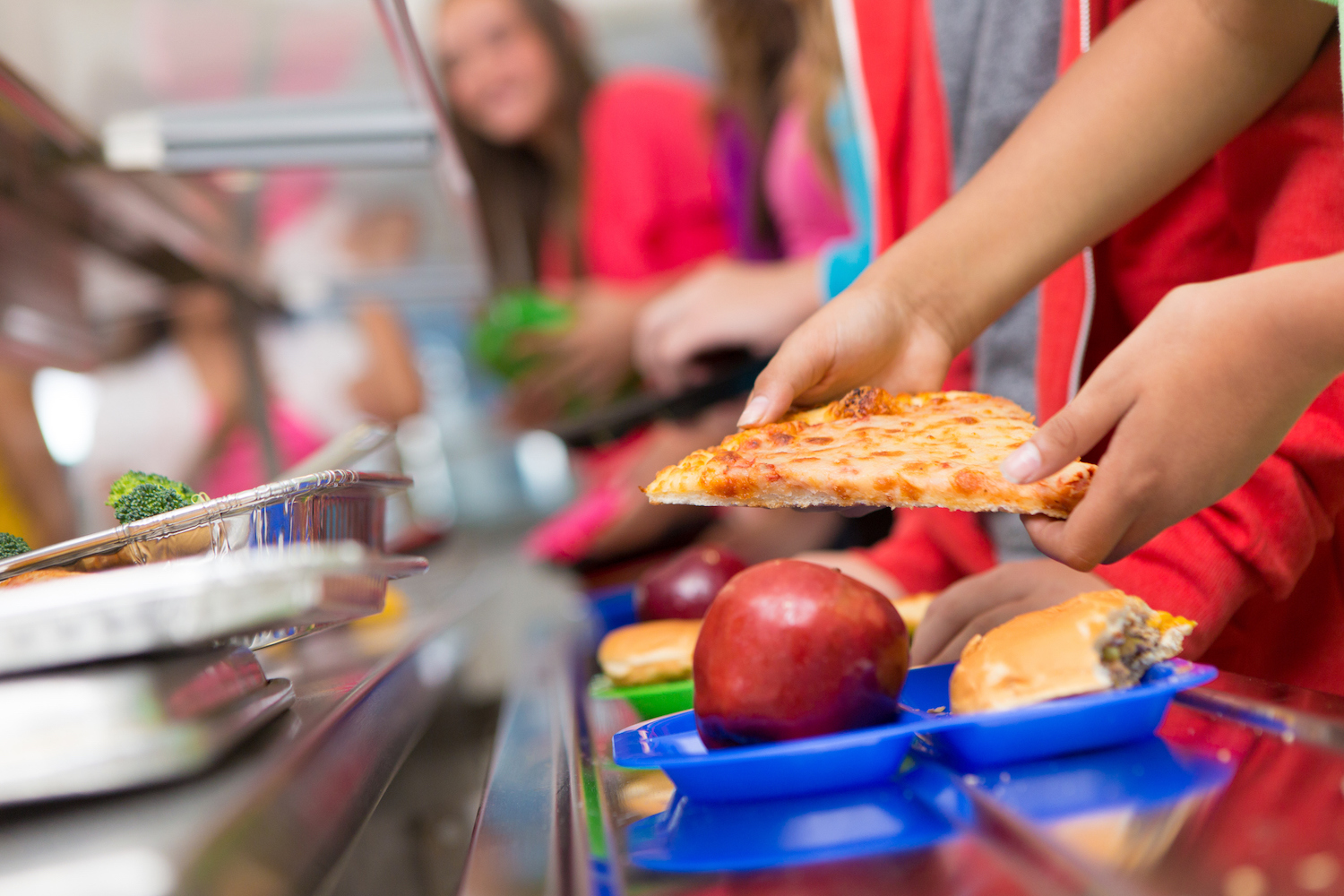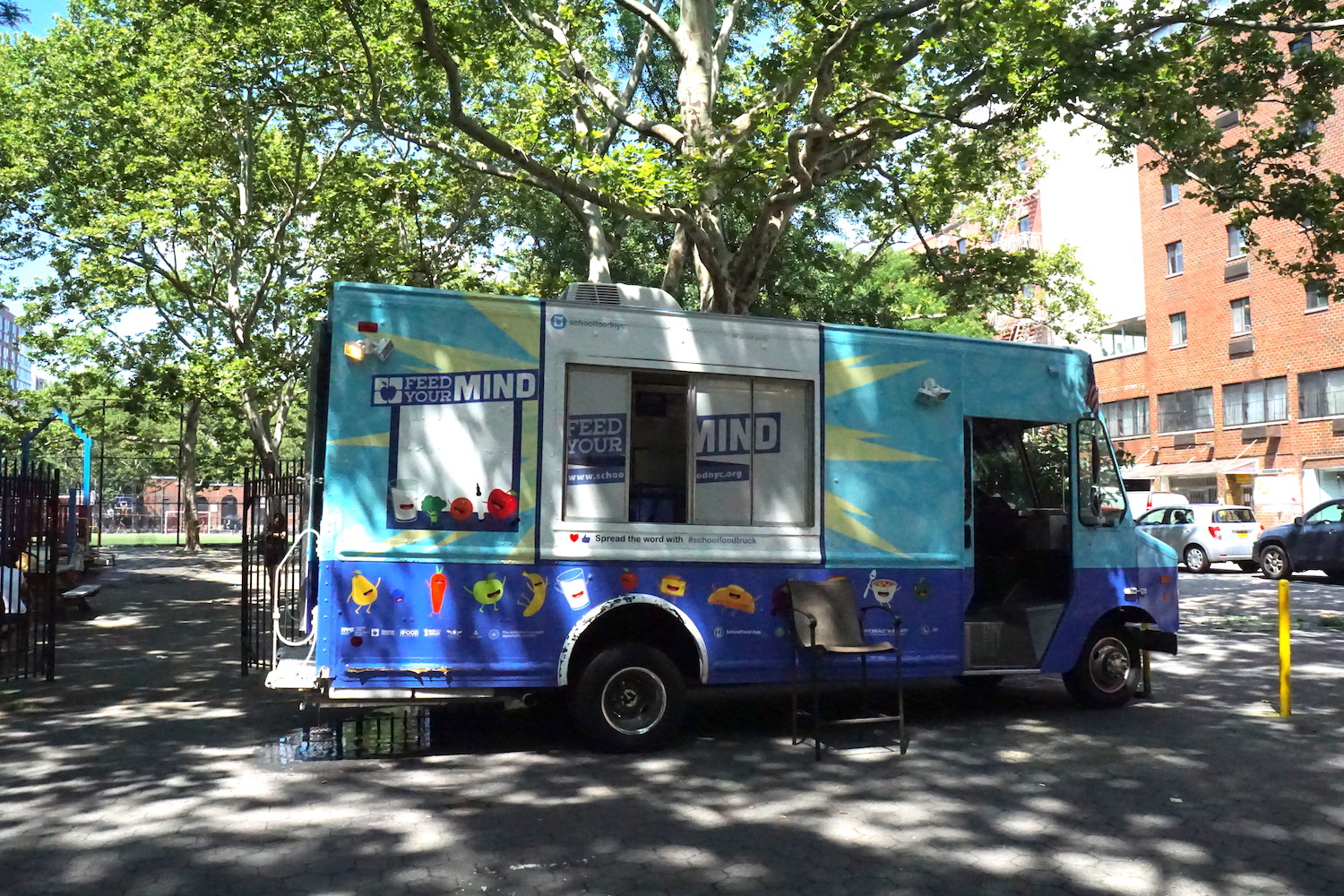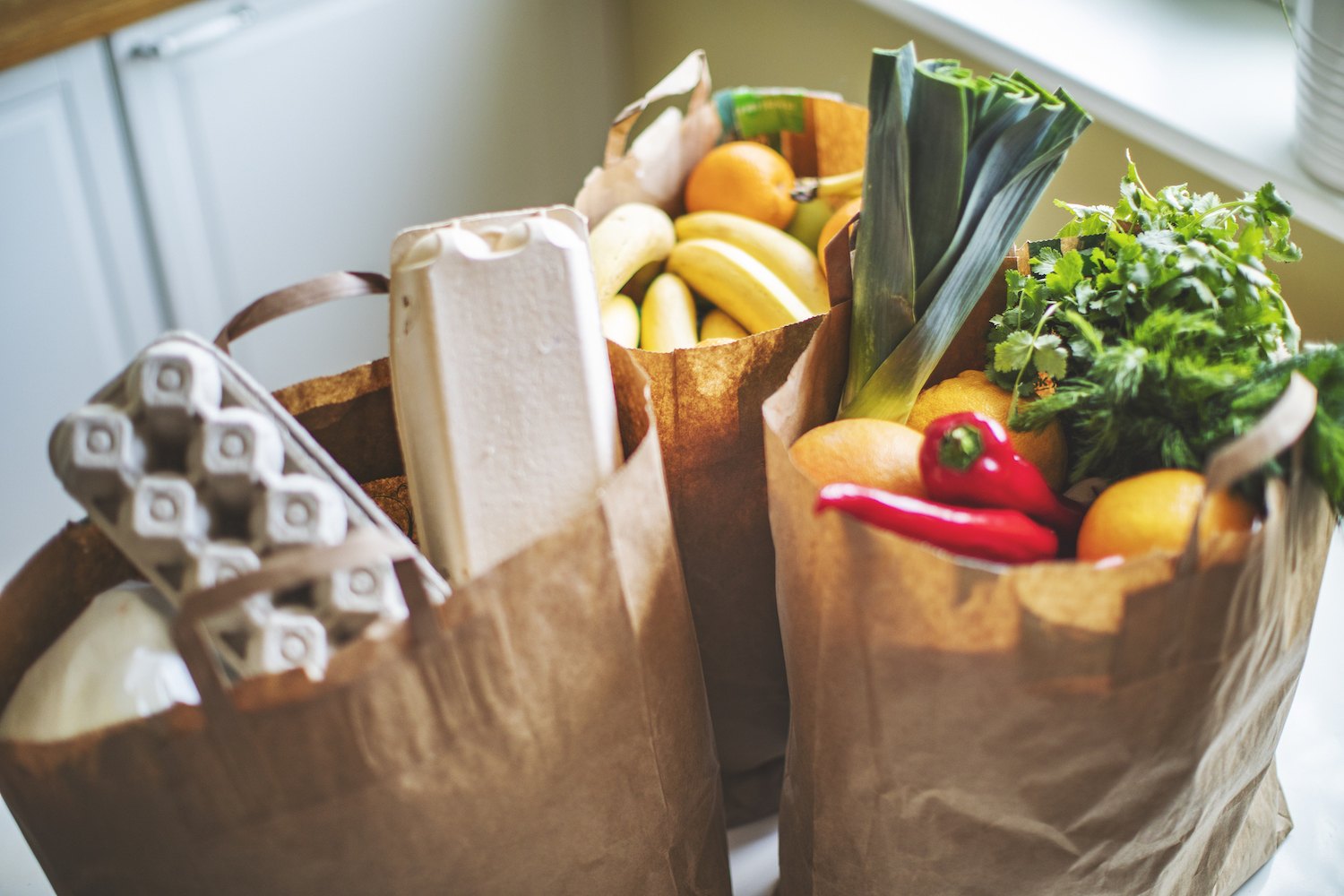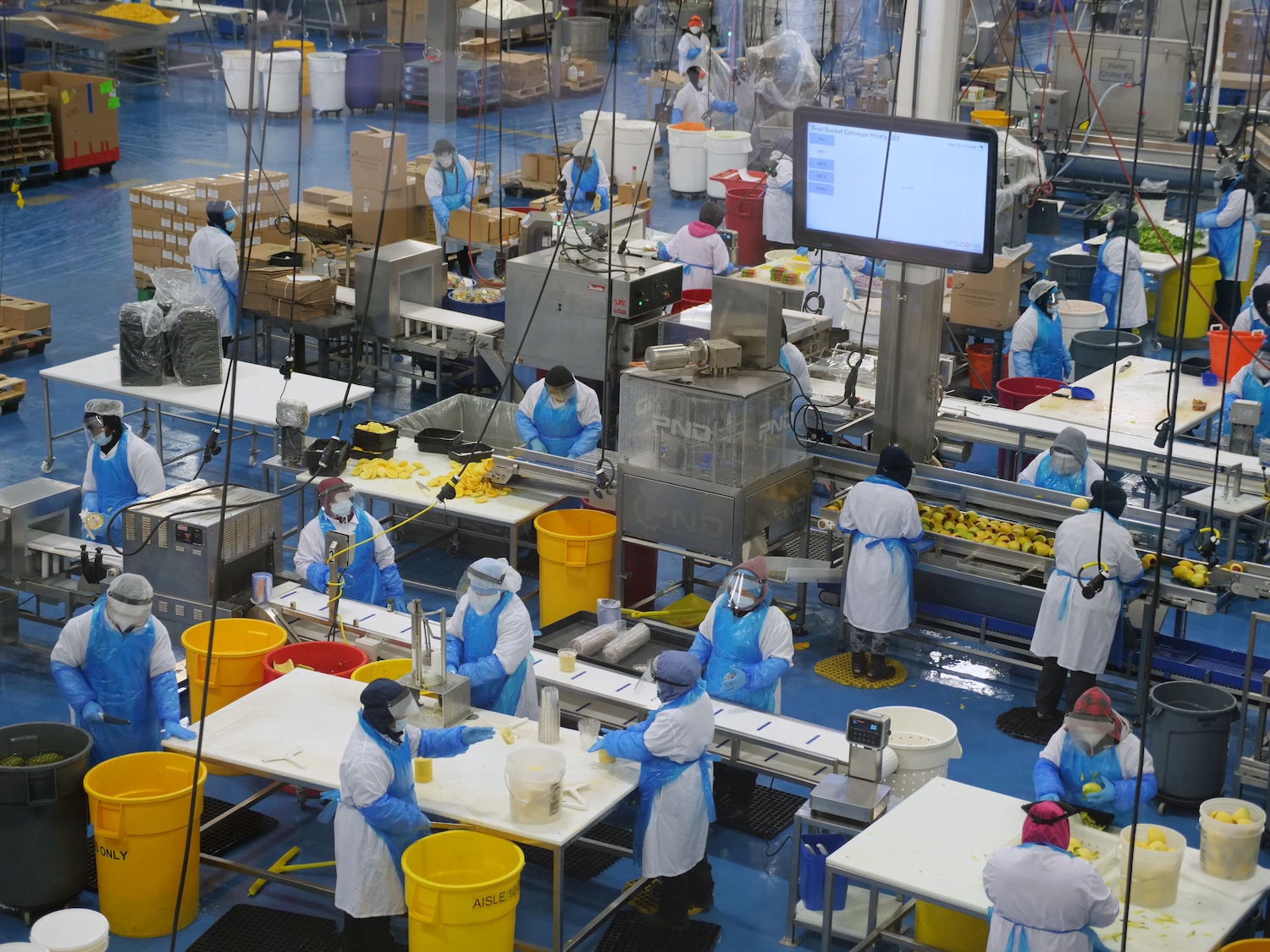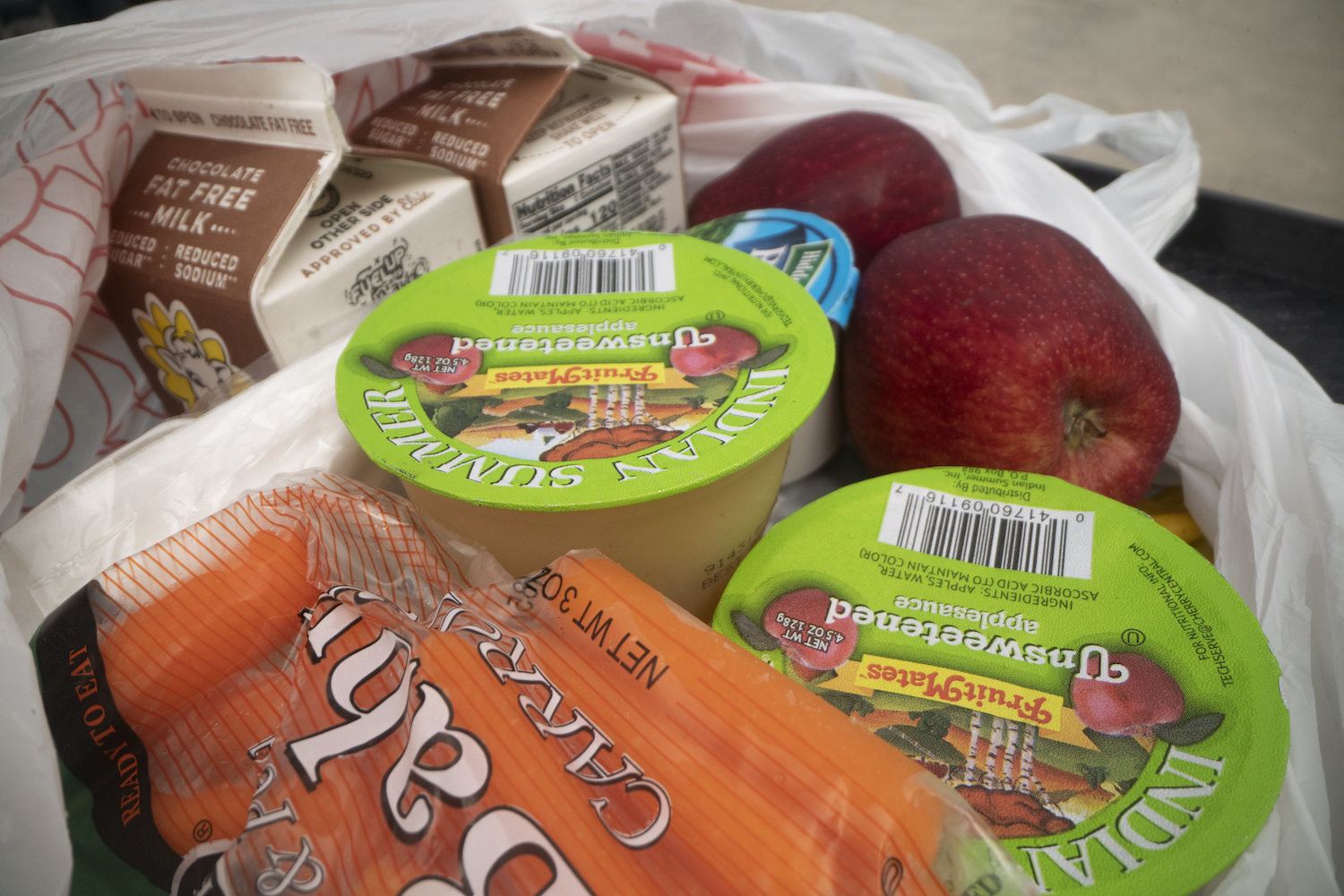
USDA / Lance Cheung
At the same time they’re facing new populations of food-insecure students, school nutrition directors are preparing to scale down their food distribution efforts, gearing up to charge for meals again, and bracing to say they can’t provide for every child in a family.
At the start of this academic year, many U.S. schools will lose their status as critical food access points in their communities. That’s due to a Department of Agriculture (USDA) decision against extending waivers that permit them to provide free meals not just to enrolled students whose families meet income thresholds, but to any person under the age of 18, whether they’re enrolled in school or not.
Before the pandemic, nearly 30 million American children relied on free food served at school for at least one meal a day. To qualify, families had to demonstrate that their income was at or less than 130 percent of the federal poverty line. But as the virus spread, so did the threat to jobs and incomes, swiftly altering the personal finances of millions of families.
School nutrition advocates predict that families will continue to struggle with hunger this fall for myriad reasons: In addition to joblessness, families are facing higher food prices than they have in 50 years, and the typical food assistance resources—food banks, for instance—have been stretched thin by the ongoing need.
Surging unemployment has fundamentally changed the role of schools in daily life, from consistent providers of a single meal to one or two children to, in some cases, emergency food source for entire families.
In March, USDA issued what’s known as an “area eligibility waiver,” lifting the income requirement, and effectively allowing all districts to serve free food to all children. (When not in a crisis, schools are only permitted to do this if at least half of their student body qualifies for free lunch.)
[Subscribe to our 2x-weekly newsletter and never miss a story.]
With over 30 million Americans unemployed as of July 11, per the Labor Department’s most recent news release, communities are facing new populations of food-insecure families, a phenomenon that has fundamentally changed the role of schools in daily life, from consistent providers of a single meal to one or two children to, in some cases, emergency food source for entire families.
“My position was: If you feed families, you’re going to feed kids,” said Betti Wiggins, nutrition services officer for the Houston Independent School District in May, regarding her initial decision to serve family food packs rather than grab-and-go meals. “[If] you’re going to give a kid one meal, he’s going to take that meal home, and there’s [still] going to be hunger in his household.
School nutrition directors are now preparing to scale down their food distribution efforts, setting up points-of-sale systems to again charge for meals, and bracing to turn some parents and children away.
The hope was that schools could continue serving their communities until the need abated. And in June, the agency announced it would extend the waiver through August 31. But it has not responded to calls from school nutrition directors and advocates to extend it further into the 2020-2021 school year. As a result, school nutrition directors are now preparing to scale down their food distribution efforts, setting up points-of-sale systems to again charge for meals, and bracing to turn some parents and children away.
“We can no longer serve all students,” said Jennifer LeBarre, executive director of nutrition services at San Francisco Unified School District (SFUSD), whose operations I reported on in June. “Coming the first day of school, which is August 17, that’s the major shift in our service.”
There are many students who live near San Francisco public schools, but who may be enrolled in charter or private institutions, as well as those who aren’t yet of school age. In the spring and summer, LeBarre was able to provide food to all of them. Soon that will no longer be the case, even though the financial realities for many families haven’t improved.
“If a parent comes up and is getting meals for their second-grader, we can’t provide meals for their three-year-old.”
“Unfortunately, we’re not even going to be able to serve siblings of our SFUSD kids,” LeBarre said. “If a parent comes up and is getting meals for their second-grader, we can’t provide meals for their three-year-old.”
Districts including SFUSD are also gearing up to charge for meals again. That means students who have become used to picking up food at no cost will now have to apply and qualify for free meals first. Otherwise, families will have to shell out about $22.50 for a week’s worth of breakfasts and lunches for her district, LeBarre estimates. For some families right now, that amount for one or more children might be too high a cost to bear. Many may turn elsewhere for nutrition needs, while others might find themselves accumulating lunch debt—that is, an accumulation of unpaid meal balances that can become insurmountable over time.
“It is something I’m incredibly concerned about,” said Jessica Shelly, director of student dining services for the Cincinnati Public Schools. “It’s going to be a huge challenge to be able to collect money from families.”
“I’m not going to deny a child lunch or a remote pack of meals … but I can’t absorb those costs.”
At the few schools where at least 40 percent of students qualify for free lunch, nutrition directors will be able to continue providing meals at no charge to all enrolled students. It’s a high threshold of need: 40 percent. Most schools won’t meet it, even though their surrounding communities are food-insecure.
Both the San Francisco Unified School District and the Cincinnati Public Schools have policies in place that prohibit staffers from denying food to a student who can’t pay for it. But Shelly still has to record unpaid meals and ask parents to settle balances down the line.
“Our meal debt [may] increase exponentially over this,” Shelly said. “I’m not going to deny a child lunch or a remote pack of meals … but I can’t absorb those costs.” Many school districts resort to covering unpaid debt using general funds, which can drain other educational resources.
“USDA has to be certain that funding is available before we provide further flexibilities and extensions.”
In comment to The Counter, USDA said it needs support from Congress to continue reimbursing schools for free food.
“[USDA] has to be certain that funding is available before we provide further flexibilities and extensions,” an agency spokesperson wrote in an email. “USDA stands ready to implement any additional authorities and flexibilities Congress provides.”
Lawmakers have introduced two proposals that would authorize universal free meals during the pandemic. Last Thursday, Democratic Representative Robert Scott of Virginia sponsored the Pandemic Child Hunger Prevention Act, which would make every student nationwide automatically eligible for free lunch. The aim, according to a press release, is to cut down on the paperwork and bureaucracy involved in requiring families to apply for free lunch. Last October, Democratic Senator Bernie Sanders of Vermont and Representative Ilhan Omar of Minnesota, also a Democrat, also introduced a universal school meals bill that would prove free breakfast and lunch to all students.
LeBarre says she expects that adding a point-of-sale system will slow down meal distribution efforts and make social distancing harder.
“Forty percent of our fresh produce comes from local farmers within a 250-mile radius of Cincinnati.”
Meanwhile, Shelly is also bracing for a drop in participation, which itself will have downstream effects on the distributors, processors, and producers she works with. According to Shelly, the district makes $6 million worth of food and beverage purchases every year. She expects her demand to shrink if USDA doesn’t extend its area eligibility waiver.
“Forty percent of our fresh produce comes from local farmers within a 250-mile radius of Cincinnati,” Shelly said. “I’m going to have to turn around and tell them, ‘Sorry, I’m not going to be serving that many meals anymore.’”
That’s not to say that the need for food won’t persist—families will just have to turn to elsewhere to meet it. Shelly predicts that food pantries or other community nonprofits will have to further extend their activities to pick up the slack.
“I think that is just atrocious and horrifying,” Shelly said, reflecting on how she’ll soon have to deny meals to some families. “It just blows my mind that we can’t take care of our community.”
Correction: A previous version of this story quoted Shelly as saying that local produce is sourced within a “20-mile radius of Cincinnati.” The radius is actually 250-miles. We regret the error.

